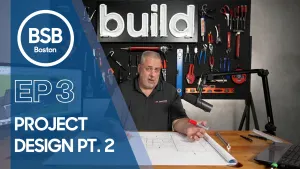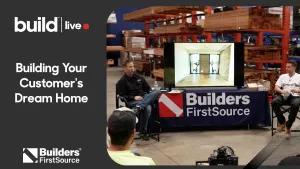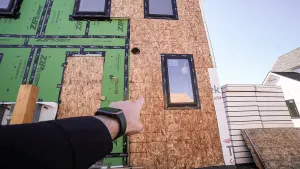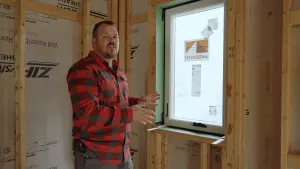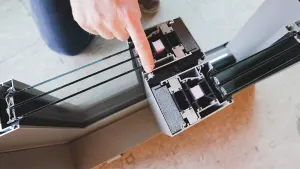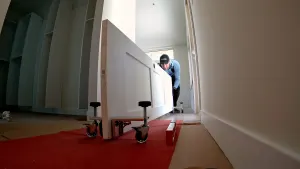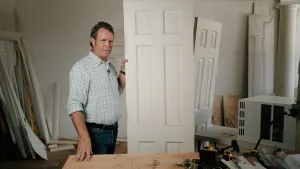Sponsored by Sugatsune
It’s human nature to want to allocate building dollars to those features that show like Countertops, Appliances, and Light Fixtures. But, it’s a growing trend among Architects, Builders, and Homebuyers to value those unseen features that create lasting value. Building science has led a whole industry to know that it is what is hidden that dictates the durability and longevity of the build—and hardware is no exception.
When it comes to doors and cabinetry, for example, hinges, glides, door-catches and handle hardware can be costly, and, while it may seem harmless to cut corners in certain places, here’s a quick look at why that actually may be the more expensive route.
The Cost of Cheap
Don’t fall victim to thinking that cutting corners on door and cabinetry hardware won’t be felt. It will, and in the near term, too. Here are the typical problems caused by cheap selections:
- Poor hardware choices are immediately “felt” by their lack of smooth motion
- Your doors will not last with lower quality hardware
- There will be screws that rapidly work their way out
- The doors/cabinets will become noisy
- Doors will eventually sag causing them to stick
- You’ll begin to notice breaks and cracks
- Homeowners will begin a cycle of costly repairs
- If low quality rollers are used instead of higher precision types that incorporate metal ball bearings, within a year of use, low-end solutions will begin to fall off the track. You might get 3−5 years out of medium-cost solutions.
- Cabinets doors will not stay closed
- Finishes will quickly show wear and tear
- Without a premium soft-closing feature, Cabinets/doors will bang when closed
Costs Compared
Pocket Door hardware for instance: Using cheap hardware for $30−$40 is clearly not a good idea. However, even medium-range $150−$250 hardware can be problematic. What should you be spending to get that decade of quiet and useful service? Most likely $300−$500. If that seems expensive, can you imagine what it will cost to have that hardware replaced down the road?
Another often overlooked cost of hardware is installation. You can have the best hardware, but the installation is just as important. Always opt for the experienced finish carpenter or millwork installer for your hardware installs. This is especially true for things that bear larger weight loads like big cabinet doors, pocket doors, and other lift/slide/motion cabinetry hardware.
Finally, more expensive cabinetry hardware equates to long-term client satisfaction. Inexpensive hardware in comparison, won’t have the same high-end features.
What does high-end and high-performance, durable hardware look like? One top-of-the-line innovator is Sugatsune. It doesn’t take much to see why their products are superior.
Why Sugatsune
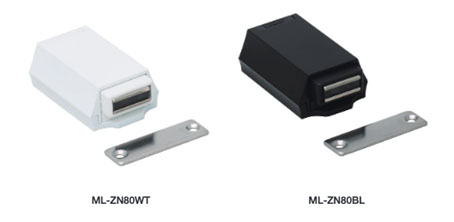
Figure 1. Ideal for large doors, the Sugatsune push-to-open door latch allows for hands-free use.
An example of a high-end push-to-open door latch is the Sugatsune ML-ZN80. Features include 11 lbs. of push force, which is ideal for large doors weighing up to 200 lbs. The magnet allows tolerance with a 1.5° swivel, while a hidden mounting screw design delivers clean appearance and easy installation. These latches eliminate the need for handles. What makes this product superior to low-cost latches, in addition to its construction and design, is that this latch has passed 100,000 open/close private cycle tests—something that low-end competitors are unlikely to perform.
Well known by architects, designers and builders and famous for its hidden-door hardware, sliding-door and soft-close products, Sugatsune is a leader in precision-engineered unique designs, such as its HES3D-E190 concealed hinge, lift-off hinges, sliding and folding door systems, door stoppers, handles and latches. Sugatsune products feature effortless movement along with an attention to form specifically for wood and glass applications for both residential and commercial use. For nearly 40 years, Sugatsune’s unique door, cabinet and concealed hinges have been a choice in the industry.

Figure 2. The Sugatsune 3-way adjustable HES3D-E190 concealed hinge series is a designer’s favorite.
Summary
Sometimes the most important elements of building remain unseen, or unnoticed. Hardware is like that. As a professional, you want your clients to get a few decades of durability out of their installed hardware. Precision rollers, metal ball bearings, excellent tracking and soft-close/soft-open systems are a smart choice when looking for durability matched by elegance. Spending more at the outset for hardware makes a huge difference and is a decision that you won’t regret.
Door and cabinet hardware will change the look of a home, and should be looked at as a long-term investment in quality and in customer satisfaction. It is also an element that can be a differentiator for a smart builder.

 Share on facebook
Share on facebook Tweet
Tweet Email
Email Share on Linkedin
Share on Linkedin

